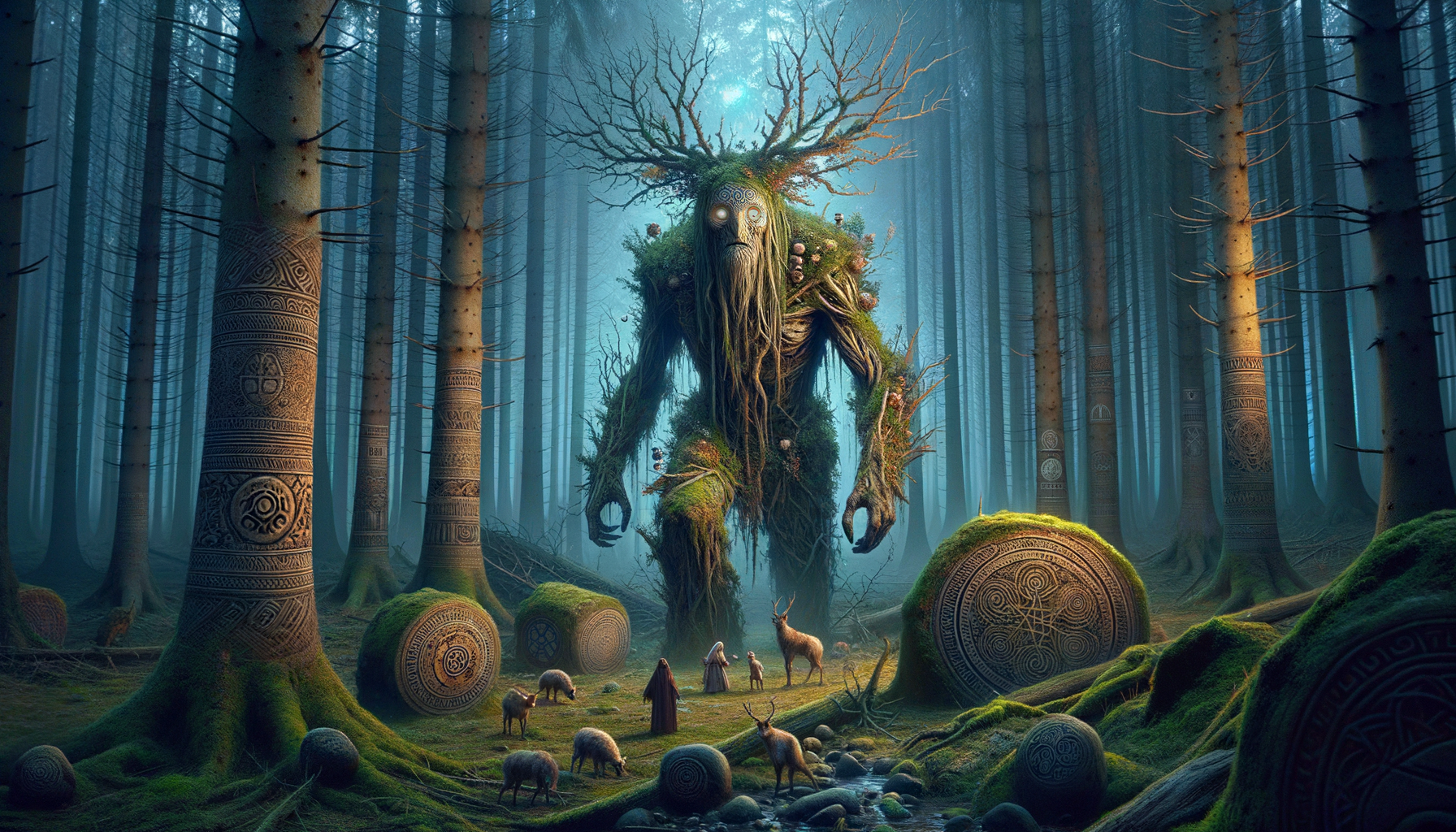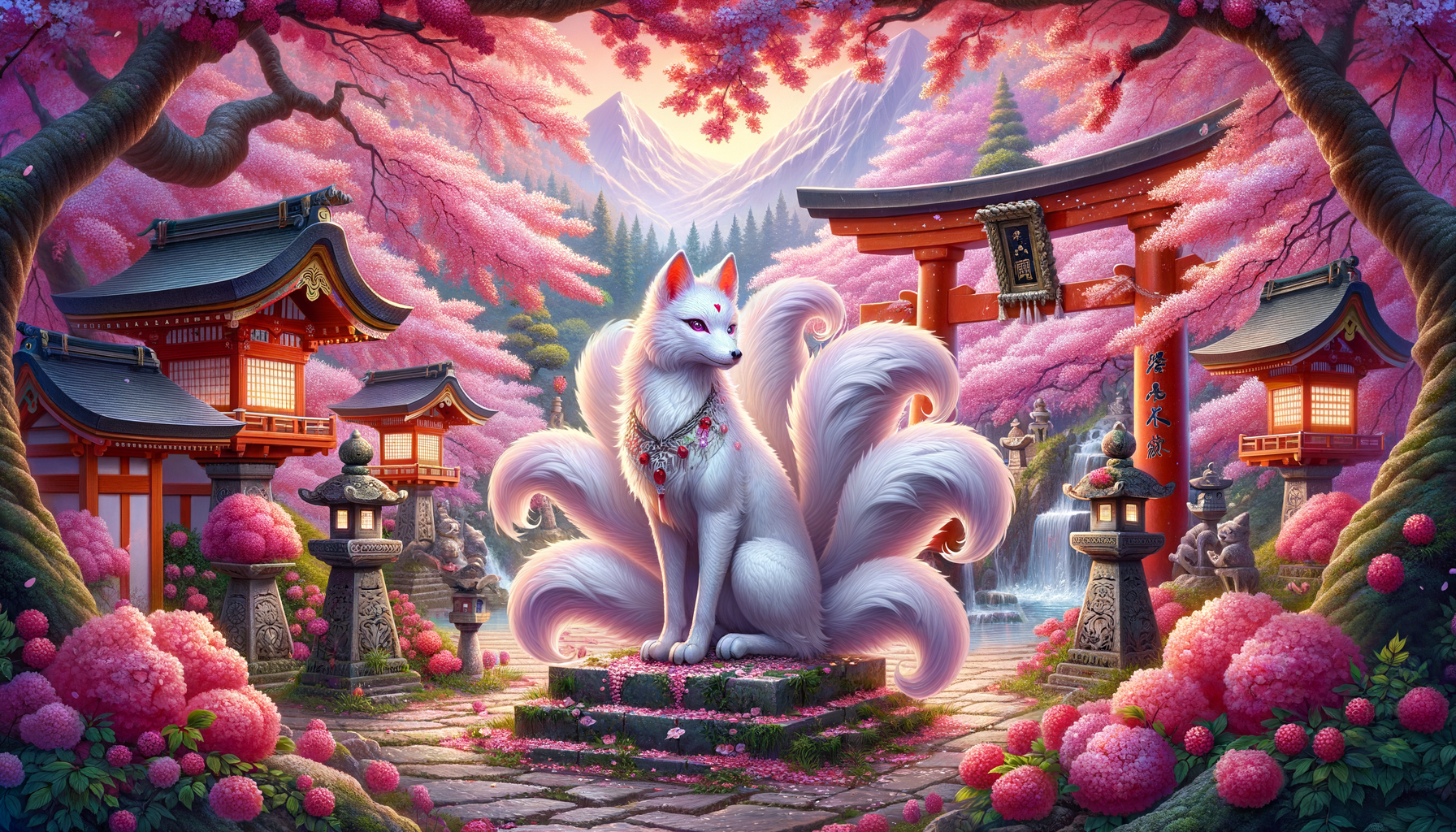Slavic mythology is a treasure trove of fascinating creatures and stories that have mesmerized people for centuries. Among these mythical beings, leshies stand out as enigmatic forest spirits with powers that both awe and terrify. Picture this: a shadowy figure, almost human but not quite, watching you from behind the trees. Intriguing, right? Let’s plunge into the mysterious world of leshies, explore their origins, fascinating myths, and their role in the rich tapestry of Slavic folklore. Did you know that leshies were believed to control the very forest itself, shaping its paths and sometimes, even leading travelers astray? Join me on this captivating journey through the verdant, mystical forests of Slavic mythology!
Origins of the Leshies in Slavic Mythology
Historical Context of Slavic Mythology
Slavic mythology, rich and diverse, dates back to the early medieval period. It encompasses the spiritual beliefs, traditions, and folklore of the Slavic peoples, who inhabited Eastern Europe. These stories were passed down orally through generations before being documented in writing.
The Etymology of ‘Leshie’ and Its Significance
The term ‘leshie’ is derived from the Old Slavic word ‘les,’ which means ‘forest.’ This etymology highlights the leshie’s intrinsic connection to the woodland realms. As guardians of the forest, leshies play a crucial role in Slavic folklore, embodying the spirit and mystery of the natural world.
Archeological and Literary References to Leshies
Archeological findings and ancient manuscripts provide tantalizing glimpses into the world of the leshie. These references reveal their importance in the daily lives and spiritual practices of ancient Slavic communities. Literary works, such as the epic “The Tale of Igor’s Campaign,” also mention leshies, cementing their place in Slavic cultural heritage.
Comparison with Other Forest Spirits in Global Mythologies
Leshies share similarities with other forest spirits found in global mythologies. For example, the Celtic ‘Green Man’ and the Greek ‘Satyr’ both embody the wild, untamed essence of the forest. However, leshies are unique in their specific cultural context, reflecting the distinct environmental and spiritual landscape of the Slavic world.
Characteristics and Powers of Leshies
Physical Appearance: Shape-Shifting Abilities and Common Depictions
Leshies are renowned for their shape-shifting abilities. They can appear as towering figures with green beards and hair made of foliage, or as smaller, more human-like forms. This shape-shifting nature allows them to blend seamlessly into their forest surroundings, making them both elusive and enigmatic.
Behavioral Traits: Guardians of the Forest and Their Mischievous Nature
As guardians of the forest, leshies are fiercely protective of their domain. They are known to lead travelers astray, causing them to become hopelessly lost. However, leshies are also capable of guiding those who show respect for the forest, reflecting their dual nature as both benevolent and mischievous spirits.
Powers and Abilities: Control Over Forest Flora and Fauna
Leshies wield considerable power over the forest’s flora and fauna. They can command trees to move, animals to obey their will, and even alter the weather within their domain. These abilities underscore their role as masters of the woodland realm, embodying the raw, untamed power of nature.
Relationship with Humans: Benevolence and Malevolence
The relationship between leshies and humans is complex. While they can be helpful to those who honor the forest, they can also be vengeful towards those who disrespect it. This duality reflects the broader theme of nature’s unpredictability in Slavic folklore, where the natural world is both a source of life and a force to be reckoned with.
Famous Myths and Stories Featuring Leshies
The Leshy and the Lost Traveler: A Tale of Guidance or Deception
One popular tale involves a leshy leading a lost traveler through the forest. Depending on the traveler’s behavior, the leshy may either guide them to safety or further into the woods, highlighting the spirit’s capricious nature.
The Leshy’s Duel: Conflict and Resolution with Humans or Other Spirits
Another well-known story tells of a duel between a leshy and a human or another spirit. These duels often end with a resolution that reinforces the leshy’s role as the ultimate arbiter of the forest, capable of both conflict and reconciliation.
Folktales from Various Slavic Regions: Regional Variants and Unique Stories
Different Slavic regions have their own unique stories and interpretations of leshies. In some areas, leshies are depicted as more benevolent, while in others, they are seen as more malevolent. These regional variants add depth and richness to the tapestry of Slavic folklore.
Leshies in Modern Literature and Media
Leshies have made their way into modern literature and media, appearing in novels, films, and even video games. These contemporary portrayals often explore the leshy’s traditional characteristics while also introducing new elements to keep the stories fresh and engaging.
Role and Symbolism of Leshies in Slavic Folklore
Leshies as Protectors of the Forest
Leshies are foremost protectors of the forest. They maintain the delicate balance of the woodland ecosystem, ensuring that no harm comes to their domain. This role underscores the importance of nature conservation in Slavic culture.
Symbolic Representation of Nature’s Unpredictability
Leshies symbolize the unpredictable and often capricious nature of the natural world. Their actions, whether helpful or harmful, serve as reminders of nature’s power and the need for humans to respect and revere it.
Seasonal Significance and Rituals Associated with Leshies
Certain seasons and rituals are closely associated with leshies. For example, spring and summer, times of growth and renewal, are often linked to leshy celebrations. Rituals may include offerings and prayers to ensure a bountiful harvest and the forest’s continued protection.
Leshies in Slavic Rites and Traditions
Leshies play a significant role in various Slavic rites and traditions. From harvest festivals to initiation ceremonies, leshies are invoked to bless and protect. Their presence in these rituals underscores their deep-rooted significance in Slavic spiritual and cultural life.
Modern Interpretations and Cultural Impact
Leshies in Contemporary Fiction and Movies
In contemporary fiction and movies, leshies are often reimagined to fit modern narratives. These portrayals may emphasize their mystical aspects or explore their interactions with modern society, providing new angles on an ancient myth.
Reinterpretations in Modern Pagan Practices
Modern pagan practices have also embraced leshies, integrating them into contemporary spiritual beliefs. These reinterpretations often focus on the leshy’s role as a nature guardian, aligning with modern ecological and environmental values.
The Influence of Leshies on Environmental Awareness and Conservation Efforts
Leshies have become symbols of environmental awareness and conservation efforts. Their role as forest protectors resonates with contemporary concerns about deforestation and environmental degradation, inspiring actions to preserve natural habitats.
Leshies in Pop Culture: Games, TV Shows, and Art
Leshies have found a place in pop culture, appearing in games, TV shows, and art. These modern representations often highlight their enigmatic and powerful nature, introducing the legend of the leshy to new audiences worldwide.
Conclusion
In summary, leshies are a captivating element of Slavic mythology, embodying the mysterious and untamed essence of the forest. Their stories continue to inspire and challenge our understanding of nature and its spirits. As we delve deeper into their legends, we see how leshies bridge the ancient and the modern, reminding us of the delicate balance between humanity and nature. Intrigued by these forest spirits? Explore more about Slavic mythology and uncover even more enchanting tales. Join our newsletter for the latest articles and stories, and continue the adventure into the mystical world of myths and legends!




